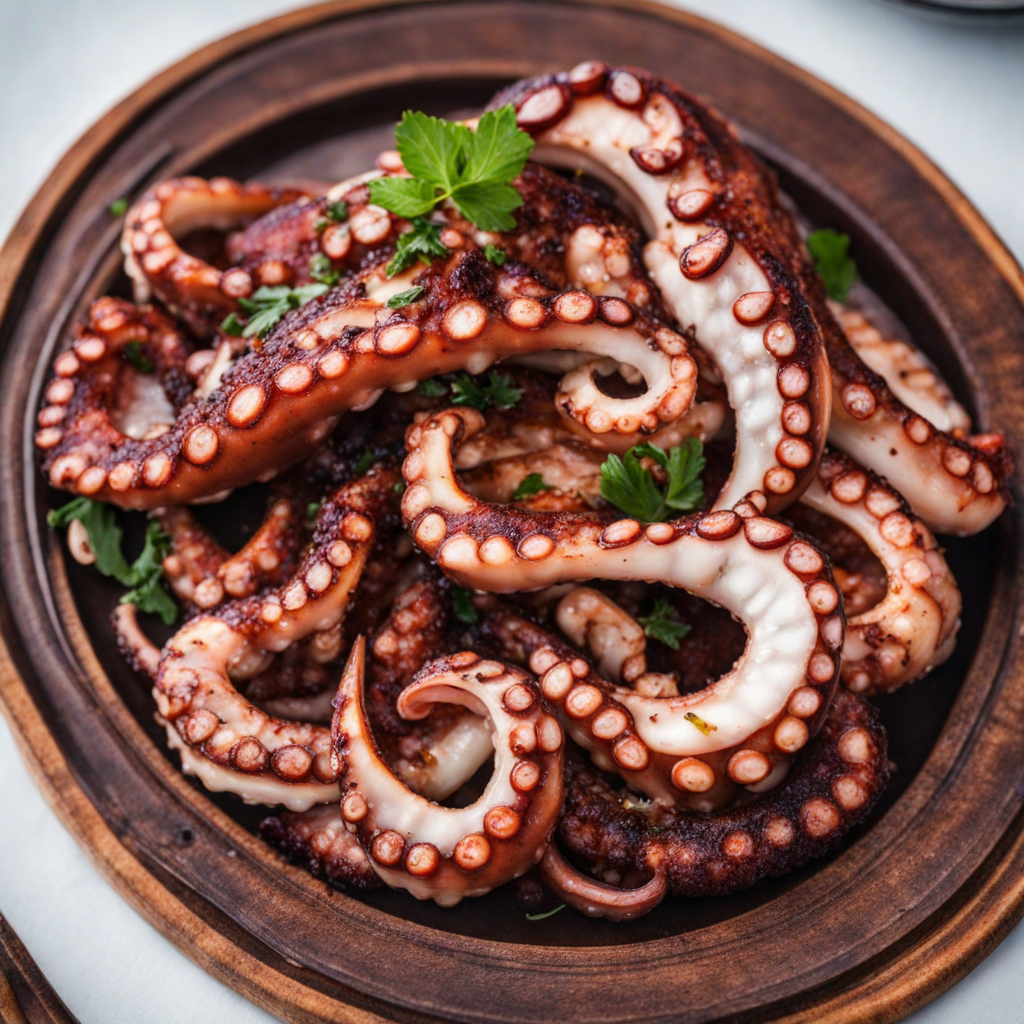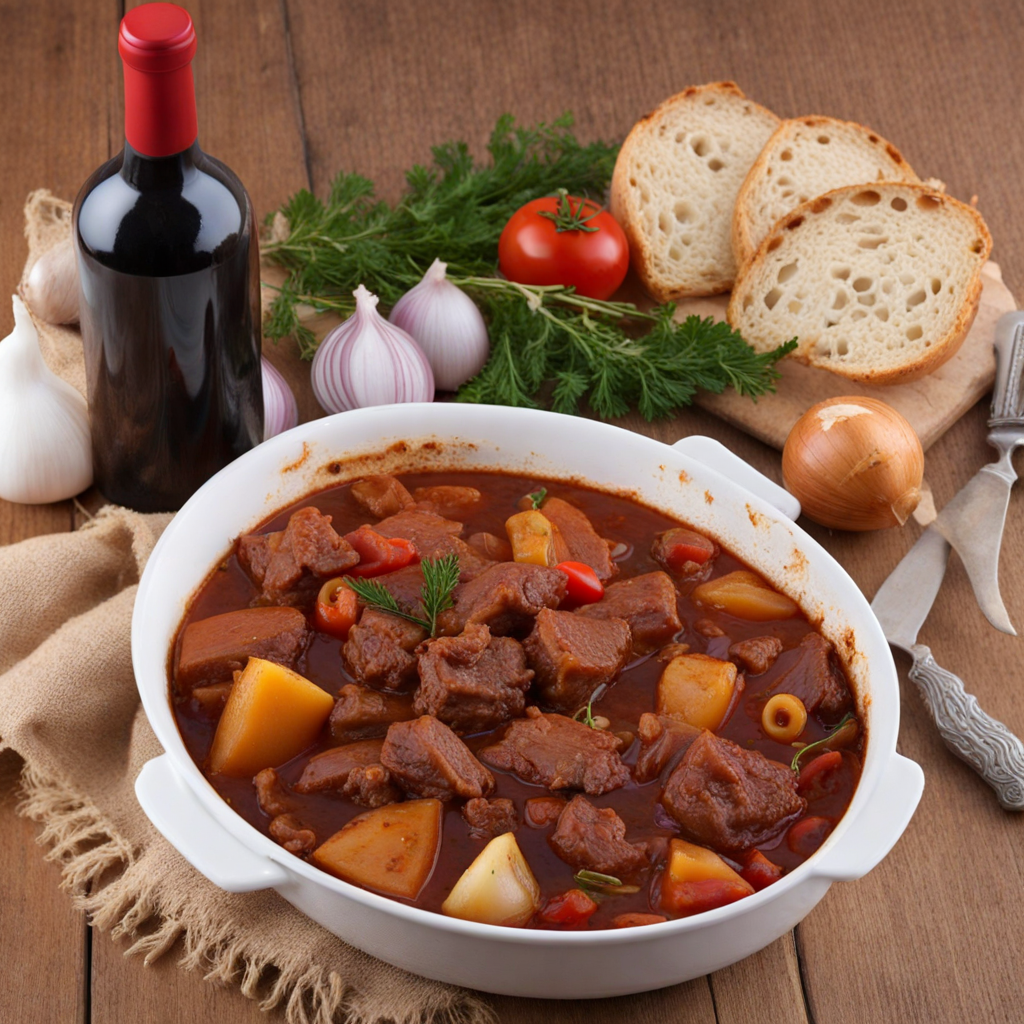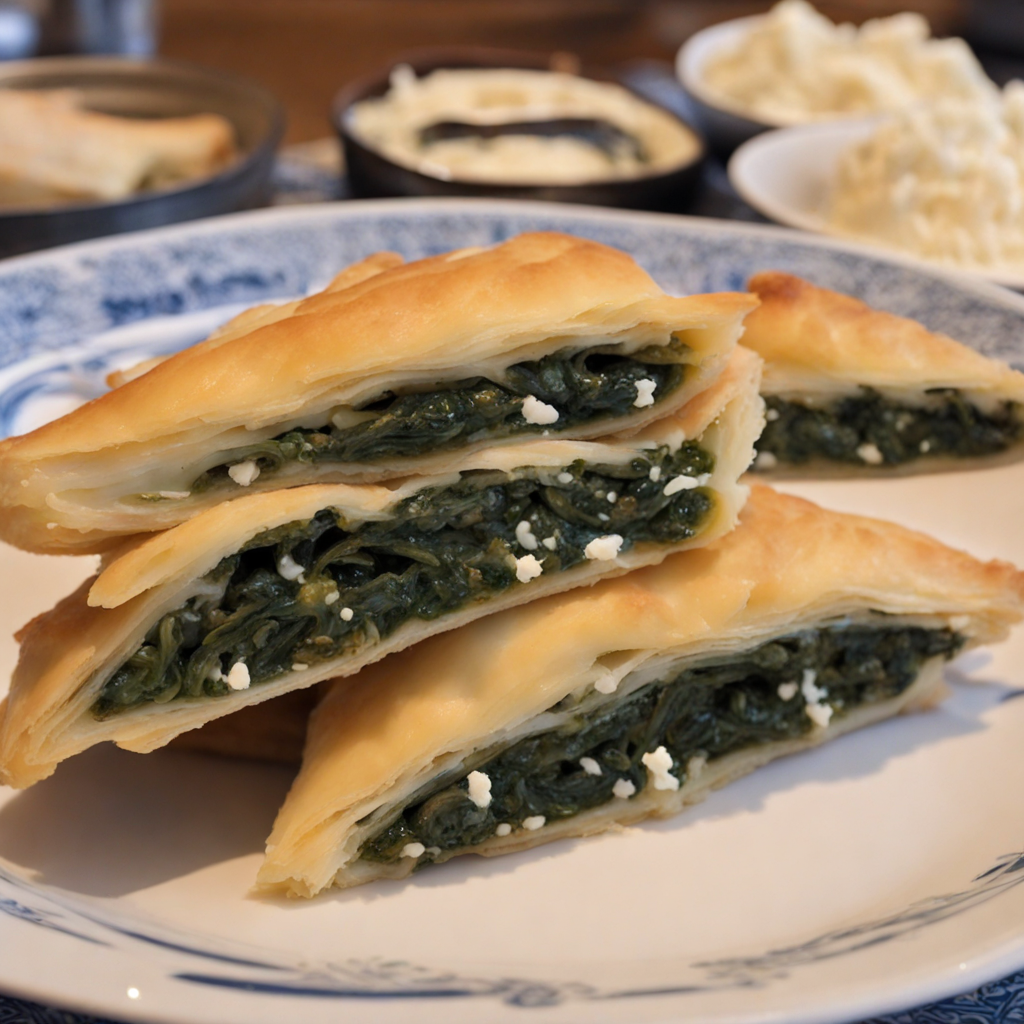Moussaka
Moussaka is a traditional Greek dish that is often celebrated for its rich layers and hearty flavors. At its core, moussaka features a base of sautéed eggplant, which is typically sliced and grilled or fried until tender, creating a smoky depth of flavor. The eggplant is then layered with a savory filling made from ground meat—usually lamb or beef—cooked with onions, garlic, and a blend of aromatic spices like cinnamon and nutmeg. This combination of ingredients provides a robust and comforting foundation that is both satisfying and enticing to the palate. One of the standout elements of moussaka is its creamy béchamel sauce, which is poured over the layered meat and vegetables before baking. This white sauce, made from butter, flour, and milk, is often enriched with egg yolks and cheese, lending a luxurious texture and a hint of richness to the dish. As it bakes, the béchamel forms a golden crust that beautifully contrasts with the tender layers beneath, making each bite a delightful experience of creamy and savory flavors mingling together. Moussaka is typically served warm and can be enjoyed as a main course during a family meal or as part of a festive gathering. Its comforting qualities and complex flavors make it a beloved dish not only in Greece but also in various Mediterranean cuisines. Each forkful reveals a harmonious blend of textures and tastes, inviting you to explore the culinary traditions of Greece while savoring the wholesome and hearty essence of this iconic dish.
How It Became This Dish
The History of Μουσακάς: A Culinary Journey Through Greece Origins and Early Influences The dish known as Μουσακάς (Mousaka) is one of Greece's most beloved culinary treasures, with a rich history that reflects the diverse cultural tapestry of the Mediterranean. Although its precise origins are debated, it is widely accepted that the roots of Mousaka can be traced back to the 12th century in the Middle East. The name itself is derived from the Arabic word "musaqqa‘," which means "chilled" or "moistened." In its early forms, this dish was a simple combination of eggplant and meat, layered and baked, mirroring the flavors and cooking techniques prevalent in the broader region. The introduction of the dish to Greece is often attributed to the influence of the Ottoman Empire, which ruled the region for nearly four centuries. As the Ottomans expanded their empire, they brought with them culinary traditions that melded with local ingredients and flavors. The Greek version of Mousaka, however, began to take shape in the 19th century as Greek national identity was beginning to emerge, particularly following the Greek War of Independence (1821-1829). Cultural Significance Mousaka is more than just a dish; it is a symbol of Greek hospitality and family gatherings. Traditionally, it is prepared for special occasions and celebrations, embodying the spirit of communal dining that is central to Greek culture. Sharing a meal of Mousaka brings families and friends together, reinforcing bonds and fostering a sense of belonging. The dish also serves as a culinary representation of Greece's regional diversity. Different islands and regions have their unique variations, reflecting local ingredients and tastes. For instance, in regions where potatoes are more prominent, they may replace eggplant as a base layer. This adaptability showcases the versatility of Greek cuisine and its ability to incorporate local flavors. Development Through the Ages As Greece transitioned into the modern era, the recipe for Mousaka underwent significant evolution. The classic Greek Mousaka that most people recognize today—a layered dish with eggplant, ground meat (usually lamb or beef), béchamel sauce, and spices—began to crystallize in the early 20th century. This version was heavily influenced by the culinary practices of Greek chefs who sought to formalize traditional recipes and introduce them to an international audience. One key figure in the modern history of Mousaka was Nikolaos Tselementes, a Greek chef and culinary educator who published a groundbreaking cookbook in 1910. Tselementes emphasized the use of béchamel sauce, which became a hallmark of the dish. His rendition of Mousaka helped to elevate it from a humble home-cooked meal to a sophisticated entrée worthy of fine dining establishments. The béchamel sauce not only added creaminess and depth but also visually transformed the dish, giving it a polished finish that appealed to the tastes of the time. In the mid-20th century, as Greek emigrants began to spread around the globe, Mousaka found its way into the hearts and kitchens of international communities. Greek restaurants opened in cities worldwide, featuring Mousaka as a signature dish. This exposure not only popularized the dish but also led to variations that incorporated local ingredients and culinary styles. In places like the United States and Australia, Mousaka has been adapted with different meats, such as beef or even vegetarian options, showcasing its adaptability and global appeal. Mousaka Today Today, Mousaka is a beloved staple of Greek cuisine, often featured in restaurants and households alike. Its preparation is usually a labor of love, requiring the careful layering of ingredients, which can vary widely. Traditionalists often opt for a meat-based filling seasoned with onion, garlic, cinnamon, and parsley, while modern versions may explore vegetarian alternatives using lentils or chickpeas. The dish is also often served alongside a fresh Greek salad and crusty bread, embodying the Mediterranean diet's emphasis on fresh, wholesome ingredients. Mousaka is typically enjoyed warm and is often left to rest for a while after baking, allowing the flavors to meld and the layers to set, which enhances the overall experience. In recent years, there has been a renewed interest in traditional Greek cooking, fueled by a global movement toward sustainability and authentic culinary experiences. This resurgence has led to many chefs exploring historical recipes, including Mousaka, emphasizing the importance of quality ingredients and traditional techniques. Conclusion Mousaka stands as a testament to Greece's rich culinary heritage and its ability to adapt and evolve over time. From its early influences in the Middle East to its modern interpretation in kitchens worldwide, Mousaka is a dish that embodies the spirit of Greek culture—one of community, hospitality, and a deep appreciation for the art of cooking. Whether enjoyed in a bustling taverna, at a family gathering, or prepared at home, Mousaka continues to delight palates and nourish souls, inviting everyone to partake in a slice of Greece's vibrant history. As we savor each layered bite, we are reminded of the centuries of tradition that have shaped this iconic dish, making it a true symbol of Greek culinary excellence.
You may like
Discover local flavors from Greece







